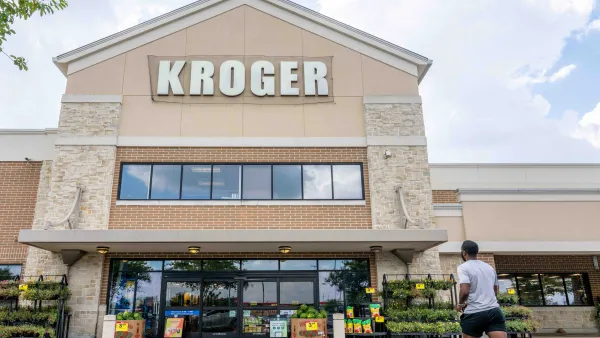Dive Brief:
- Instacart beat Wall Street estimates in its first earnings report since the company went public in September.
- For its third quarter, which ended Sept. 30, Instacart recorded $764 million in revenue, up 14% year-over-year, driven by its fulfillment efficiency efforts and strong advertising performance. Instacart saw gross transaction value increase 6% in Q3, to $7.5 billion, driven by growth in orders and average order value.
- For the full year, Instacart said it expects to triple its adjusted EBITDA compared to 2022 and for gross transaction value growth to be in the mid single digits.
Dive Insight:
In the face of headwinds including high interest rates, inflation and lowered government assistance for consumers, Instacart’s large scale is its key competitive advantage over smaller rivals, executives said in its earnings report.
Instacart said that even as macroeconomic forces challenge its business, the company is focused on increasing both online grocery adoption and its in-store services as part of its omnichannel approach.
In Q3, Instacart saw its number of orders grow 4% year-over-year to 66.2 million while its average order value increased 2% to $113. Instacart noted that average order value growth in Q3 moderated as the company lapped higher inflation. The company’s adjusted EBITDA increased 120% year-over-year to $163 million, accounting for 21% of total revenue.
Instacart said that its net loss of $2 billion was mainly due to the nearly $2.6 billion in stock-based compensation expense, which shot up during its initial public offering. CFO Nick Giovanni told investors Instacart expects to return to profitability in the upcoming fiscal year.
In the heated race for online grocery sales, the company sees its mix of large and small baskets as a competitive advantage, Instacart CEO and Chair Fidji Simo said on the earnings call Wednesday, noting that Instacart closely tracks the conversion rates of consumers with small baskets ($75 or under) to large baskets (over $75). Large baskets support more fulfillment efficiencies and more advertising opportunities, Simo said.
Instacart+, the company’s membership program that launched last year, accounts for “more than half of the activity on our platform,” Giovanni said.
“Seventy-five percent of grocery spend in North America comes from large baskets,” Giovanni said. “And so we believe it's critical that an online grocery service can serve that use case and we think that we’re the best at that.”
In Q3, Instacart’s advertising and other revenue was $222 million, up 19% year-over-year, driven in part by stronger than anticipated advertiser spending in back-to-school and fall football campaigns. Simo said Instacart plans to grow its ads business by getting advertisers to spend more, getting more emerging brands to buy ads, deepening penetration in categories with a high investment rate like personal care and alcohol and investing in more off-site properties through Carrot Ads.
Instacart’s four-sided marketplace model — gig shoppers, retail partners, ad partners and consumers — offers a mix of growth opportunities and challenges for the company. Simo said its scale and expertise in online grocery makes it valuable to retailers even as those retailers increasingly move to control more of the online shopping experience themselves. The consumer side of its model, she said, has the “most room for growth.”
“This is an industry that is still only 12% penetrated online. And so a lot of our focus and some of what you're seeing in terms of investment in sales and marketing and customer incentives are really geared towards accelerating online adoption,” Simo said.
As those consumers continue to weather high food prices, Simo gave insight into how the company works with its retailer partners on pricing. Retailers — not Instacart — control pricing on the platform, but Simo said that Instacart “highly encourages” its grocery partners to offer the same prices online as in-store, noting the company offers price optimization through the Eversight business it bought last year.
Out of the 1,400 retail banners on its platform, 425 are at price parity with the store, Simo said.
“For the three largest grocers that are at price parity with the store, they are growing faster than the rest [of our partners] ... We think that grocers will embrace an omnichannel strategy and embrace giving the same value online as they do offline because an omnichannel customer spends two to four times as much as in-store only customers,” Simo said.












